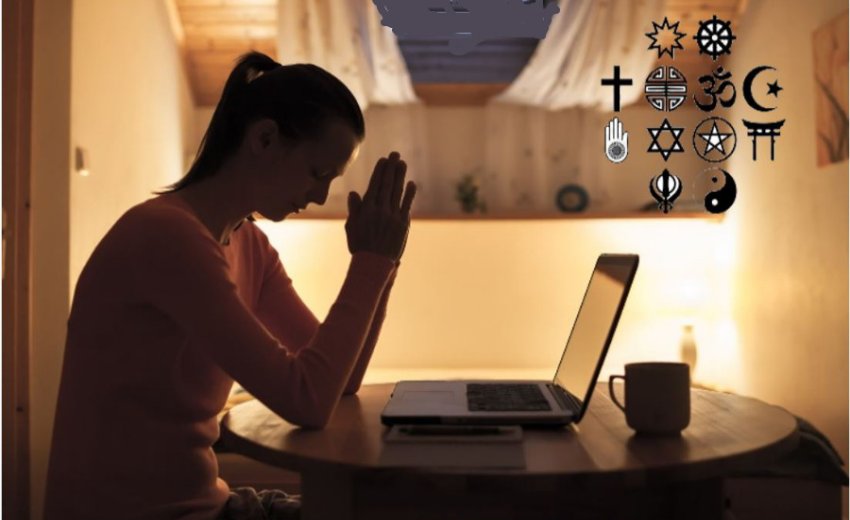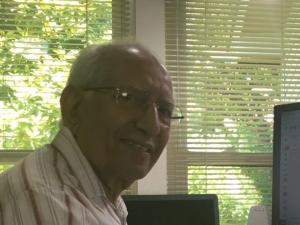New Religious Practices are on the Horizon
by Harbans Lal, Ph.D., D. Lit (Hons)
Outside of the disruptions we know so well, there is something weird going on related to religious behaviour and the Covid-19 pandemic. In many ways, normal activities like religious attendance have slowed down or even stopped. And yet there is a sense that many important aspects of life are visibly accelerating. Trends that may have taken decades to happen are now pilling up in front of our eyes.
This is what I have observed from both my life and the lives and events of my friends and community.
Among these changes is the transformation from internal agitation to a focus on more liberal institutions and practices. By that I mean practices free of interference from the clergy. In many cases, trends that were working their way slowly through Sikh societies have now sped up.
What Guru Nanak taught us centuries ago, which we chose to set aside and maybe undertake sometime in the future, are now appearing almost daily. Let me share a few observations with you.
Gurdwara Attendance is Diminishing
In his recent article, The Coming Religion Recession, David Gibson of Trinity Church described the situation so well for Christian churches. His main hypothesis is that the massive changes of 2020 will result in less worship and a diminished religious community.
In many aspects it is no different for us. Gurdwara attendance is decreasing among millennials. Gurdwara’s are only full due to recent arrivals from India. Children born in the Western world are rarely seen among our congregations. Someone in Los Angeles counted that only 3% of those born in America went to the gurdwaras. Those who do go are seen cleaning the hallways or serving in the kitchen, not attending religious services.
I do not have to tell you the reasons, which all of you know well.
Now that we are in a pandemic, the forecast for traditional religious practice, as mandated by the clergy, looks more like recession than resurrection. With the pandemic rising or remaining steady, the prospect of older congregants showing up for worship anytime soon is diminishing.
The Clergy are Losing Ground
Because of the way the virus spreads, pandits, bhais, and pastors are forced to remain away from the people they were ordained to serve. Only those who serve the hungry, sick and dying are engaged and paid.
But their ignorance is not the kind of witness that will stir our souls to greater observance of our Guru’s teachings, even though the gurdwaras in general continue to hire them. They are cheap to hire and cost less as they are less educated. I do not mean to imply that we do not have the educated ones available, we do. But they are not always succeeding in our religious institutions.
Let me come to the point. We do not have our own statistics, but our neighbours tell us that the pandemic has strengthened their faith, and the digital downloads of the Bible and prayer apps are spiking. My Sikh colleagues tell me that, at home, they are increasingly listening to kirtan, singing the Guru’s hymns, and studying the discourses on the Guru’s teachings. They have many choices and select the best content from YouTube and other places on the internet. Further, they have less distractions from sports and other entertainment, which has now been cancelled or postponed. As a result, our people are using the time to hear the Guru.
Another serious problem to a spread of Gurdwaras is that the community is facing an economic downtrend. Despite the popular view of our Gurdwaras as money-making enterprises with deep pockets, when it comes to its business model, we are as vulnerable as the restaurant industry. Our houses of worship have lots of overhead, few reserves, and are dependent on a regular influx of congregants to make their budgets. Today, with few worshipers coming in person, and not donating online enough online, congregations are laying off staff, trimming budgets, and struggling so that they have to offer the religious programs online.
Further, our religious institutions are not always competitive with what is available online.
The Guru is always available Online
I am not discouraged that our traditional religious practices may be on the decline. I am continually encouraged to see our community organize online. They are creative in finding new and intelligent materials to watch and to hear. These programs promise to dispel myths, dispel cooked up stories about our religion and our Gurus, and correct that part of our history which has its origin in rumours and unconfirmed events.
Now, the verse, Guru mere sang sada he nale, is finding new meaning. Further, the use of internet as a medium of learning, praying and sharing, provides continually refreshed material.
Conclusion
In conclusion, I forecast that when the coronavirus era finally ends, there will be a Rip Van Winkle feeling — a sense of having been asleep and waking to normality, except that we will have time-travelled. The new normality will resemble the year 2030 that would have come without the virus, rather than just a simple turn to 2021 or 2022.
Many religious and cultural traditions as well as our institutions will be visibly changed for the good. Because, then, they will be based more on research, logic, and consistency with the Guru’s hymns.
Let us look forward to the change.







